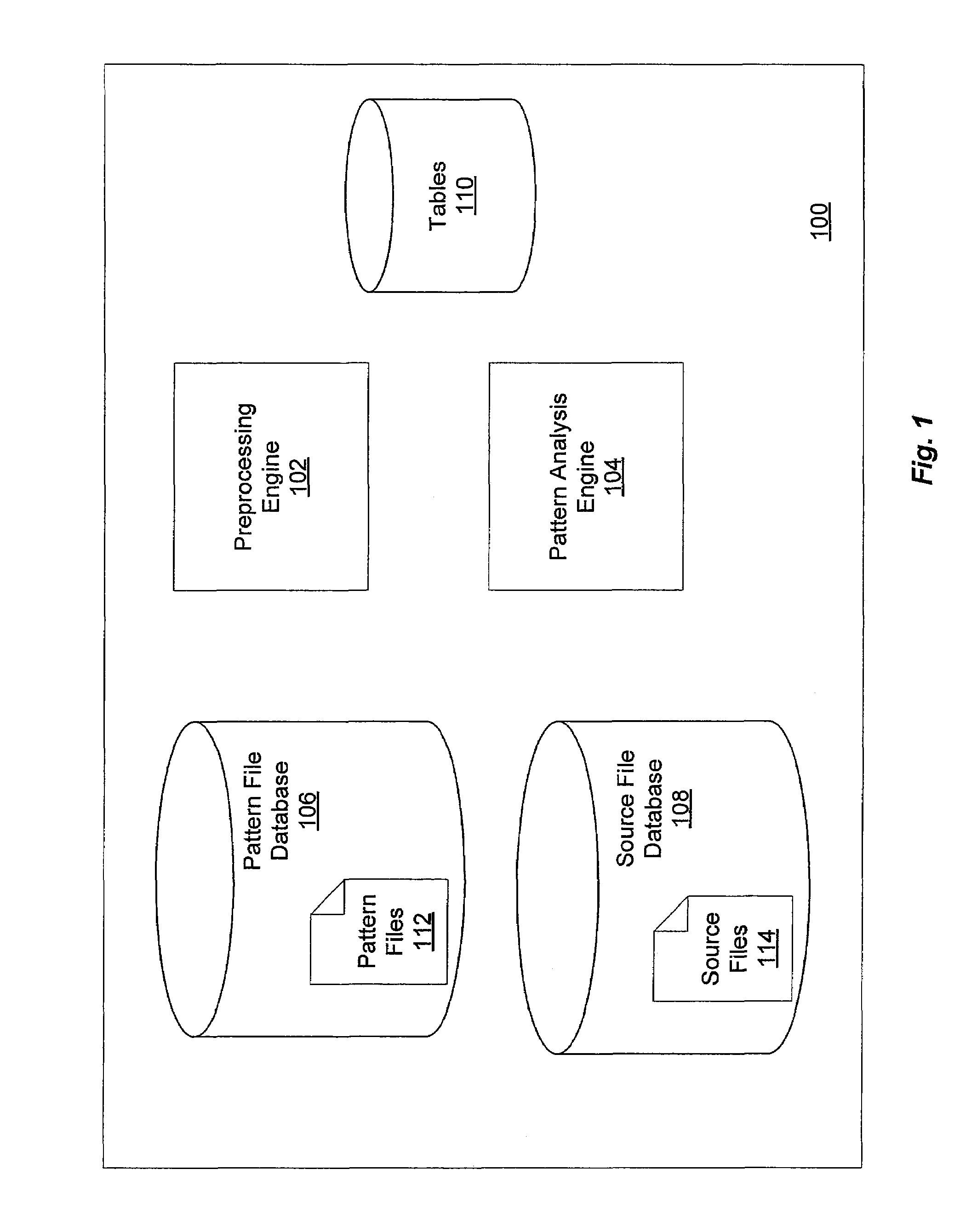Determining a document similarity metric
a document similarity and metric technology, applied in the field of document searching, can solve the problems of poor performance and limit the number of search patterns that can be used, and achieve the effect of facilitating interpolated binary search into a segmen
- Summary
- Abstract
- Description
- Claims
- Application Information
AI Technical Summary
Benefits of technology
Problems solved by technology
Method used
Image
Examples
Embodiment Construction
[0022]FIG. 1 illustrates a system 100 for performing multi-pattern searching in accordance with an embodiment of the present invention. System 100 includes a pattern file database 106, for storing pattern files 112 having patterns that are to be matched against source documents; a source file database 108, for storing the source files 114; a preprocessing engine 102, for preprocessing pattern data and creating SUFFIX, PREFIX and PATTERN tables; a tables database 110 for storing the tables created by preprocessing engine 102; and a pattern analysis engine 104, for identifying instances of the patterns in the source data. Components of system 100 are described further below.
[0023]The conventionally-known Wu-Manber approach builds in turn on the Boyer-Moore string-matching algorithm, which proceeds as follows. Given a pattern of length m, compare the last character of the pattern against tm, the m′th character of the text. If there is no match, then the algorithm determines the rightmo...
PUM
 Login to View More
Login to View More Abstract
Description
Claims
Application Information
 Login to View More
Login to View More - R&D
- Intellectual Property
- Life Sciences
- Materials
- Tech Scout
- Unparalleled Data Quality
- Higher Quality Content
- 60% Fewer Hallucinations
Browse by: Latest US Patents, China's latest patents, Technical Efficacy Thesaurus, Application Domain, Technology Topic, Popular Technical Reports.
© 2025 PatSnap. All rights reserved.Legal|Privacy policy|Modern Slavery Act Transparency Statement|Sitemap|About US| Contact US: help@patsnap.com



